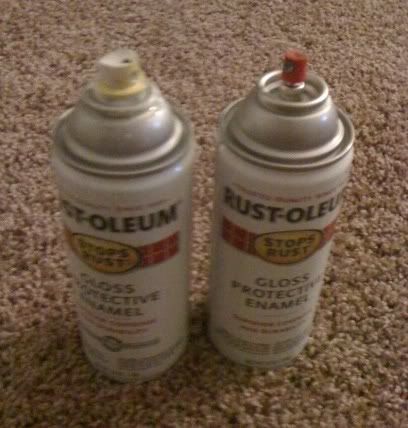A simple cosmetic change such as an alteration of the logo to keep up with changing social conditions (keep up with the times) is the first type of change that comes to mind. Recently, Gap (clothing/fashion retailer) chose to introduce a new logo, but people were outraged (slight exaggeration). As of late, if you asked people what came to mind when they heard someone reference the Gap, the company being a forward-thinking fashion boutique would be pretty low on list of relevance. People seem to go to the Gap for something simple and basic or a look that they have grown to think of as traditional (such as khaki, cargo or chino pants). Changing their logo was likely far from being a necessity. What they needed, if anything, to improve their status in the fashion world, was a rethinking of their product line. Instead, they chose this route, but at least it got them back into the spotlight, somewhere they haven't been in a while (another "any publicity is good publicity" situation). Thanks to "The Guardian" (link below), I was able to provide an image (above) of both Gap logos for reference (old one on left, proposed one on right).
One alteration of a product that often proves more noticeable and usually causes more rejection from consumers is a change in ingredients or change in the consumable product itself. Notoriously, this is the shift from using refined sugar to high-fructose corn syrup. One of the fist companies to really take this concept mainstream was Coca Cola. In 1985, Coca Cola introduced New Coke which had a much sweeter flavor. Before releasing, the company did its fair share of research and taste tests where most people said that, if it were Coca Cola, they would purchase it (about 10-12%, however, did say they would never buy Coca Cola again if that were the case). It quickly hit the market, and though most people were happy with the new change, a minority raised a stink, and Coca Cola Classic was reintroduced. Coca Cola decided to sell both products side-by-side (with New Coke getting a few name changes along the way (Coke II, C2, and others)), but Coca Cola Classic retook the spotlight, and that's the Coke to which we are all, most likely, accustomed. This could be seen, by some, as a failure to introduce a change to a mainstream product, Coca Cola is a savvy company, and I strongly believe that it was all a plan to introduce high-fructose corn syrup as a sugar replacement into their product (as their product used sugar before the change and high-fructose corn syrup upon reintroduction). It still attests to consumer rejection of shift or change in products that they have come to love (but I would like to note that C2 is still sold in some (mainly foreign) markets). Thanks "Business Week" (link below), I was able to provide an image (above) of a can of each version of their product (no explanation deemed necessary).
The last type of change of which I can think at the moment is a change in packaging or delivery system. As this is usually intend to facilitate the use of the product or storage, it usually has a higher chance of acceptance by the public. That's because it's usually brought on by complaints (whether direct to the company or circulated publicly by word-of-mouth) about an inherent flaw or opportunity for improvement in the current product. One current instance of such a situation is that of Heinz changing the packaging of their single-serving ketchup packets to allow the user to both pour it (as opposed to trying to force it out of a wasteful packet with limited capacity) as well as use it as a dipping tray (dual openings (non-exclusive)). This is a situation where the company just expanded the use (and capacity) of a popular product without removing the original use (you can still pour or dispense it onto the desired surface or item). It was brought on, most likely, by study of other companies or institutions using a different container (dipping container (sometimes containing Heinz)), and I think it will be greeted with open arms. I, for one, think it's an improvement with few, if any, drawbacks (less crush-resistant due to rigidity), and I would be excited to see it if I were to reach for ketchup in a fast-food restaurant. Thanks to Heinz (link below), I was able to provide a sample image (above) of the new packaging.
Though still a product change intend to increase the ease-of-use (packaging as above), this last example (which prompted today's post) deserves its own paragraph as it had different results. Rustoleum seems to have changed some of the spray cap of it's common enamel spray paints to a new "comfort" cap. It seems like a great idea, but, like any change in a product, only true consumer testing can reveal whether it is an improvement or a step back. I bought a few cans of their spray paint recently (so the contained product is, most-likely, similar in age and quality), and a couple had the new (comfort) cap while the others had the old-style (very traditional) cap. As far as the feel and ease-of-use, I would definitely say it's an improvement in terms of comfort. I felt a much lower amount of finger strain during use (with the new cap). I did, however, find problems upon storage. Whenever I am done using them, I depress the cap for about five seconds with the can upside down (per their instructions) to clear some of the build up. When I went back to use some of these after letting them sit a few days (after use) in a climate-controlled house, I found that those with the traditional cap would perform flawlessly (no surprise and nothing new), but I also found that those with the new cap were irreparably clogged (I tried mineral salts per their instruction). Sadly, as they were female caps (as opposed to male caps on their previous models), they are unusable until I can find a new replacement cap (most caps I find are male). Since I don't think that will fix the problem permanently, I chose to write a quick note containing my experience and send it to Rustoleum (via their website, below). It seems that was the best solution, and I'm really not that upset with them for the change (but I am annoyed by my inconvenience). I still try to give them credit for trying to improve a product, and, as such, I have chosen to try to help guide them along in that venture if at all possible. I like companies that try to improve consumer experience (especially at no extra charge as in this case). Thanks to my iPhone, I was able to provide an image (above) comparing the two types of caps (new (comfort) on the left and traditional on the right), and I recommend using the one on the right in the time being.
Though I don't think all of my posts will or should have a moral message or other form of beneficial wisdom, I still think that there is something to be taken away from this. When a company makes a change in their product, they are, most likely, unsure of whether it's going to be seen as an improvement or a drawback. As such, if a consumer is interested in the product enough to care about, or even just notice, the change, it couldn't hurt to forward their thoughts to the company. Some may see that as free market research, and, in a sense, it is, but that doesn't mean it can't come back and benefit the consumer who makes that comment. I try to think of it as helping yourself (and anyone in your shoes), and I will try to take my own advice in the future by making those comments (whether positive, negative or neutral) and forwarding them to the appropriate party any time I notice a change in a product on which I feel my input could be beneficial. I don't think I'm so important that my opinion is more valuable than others, but the only voices that are heard are of those that speak up (in this case, that's me, and they can choose to ignore it if they wish without making me feel lesser (I spoke my piece)).
Links:
The Guardian: Website
Business Week: Website
Heinz: Website
Rustoleum: Website




No comments:
Post a Comment